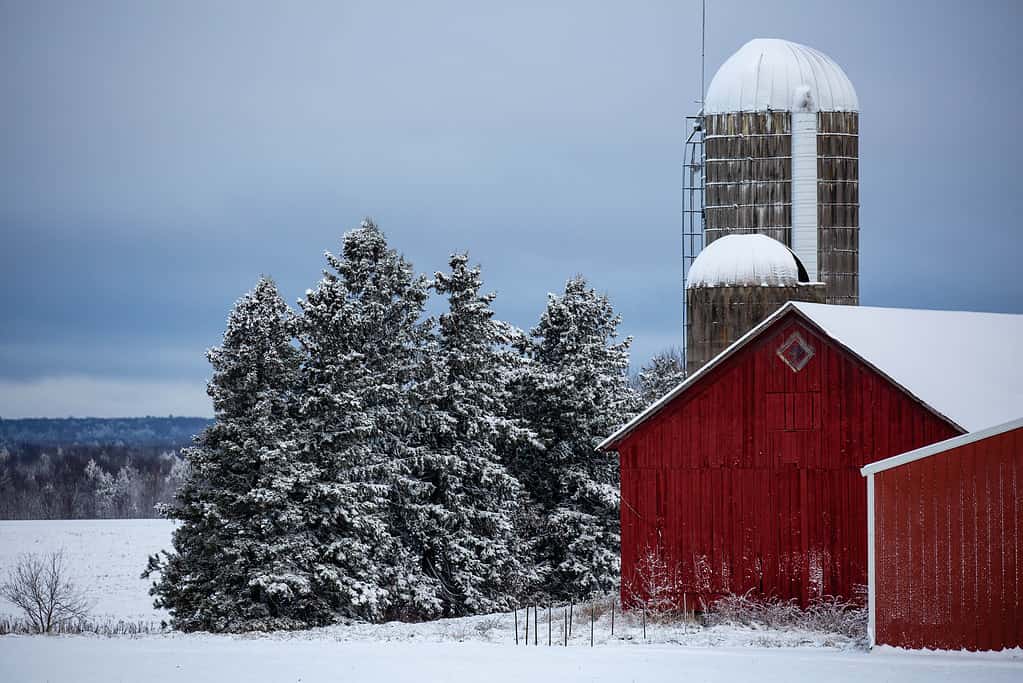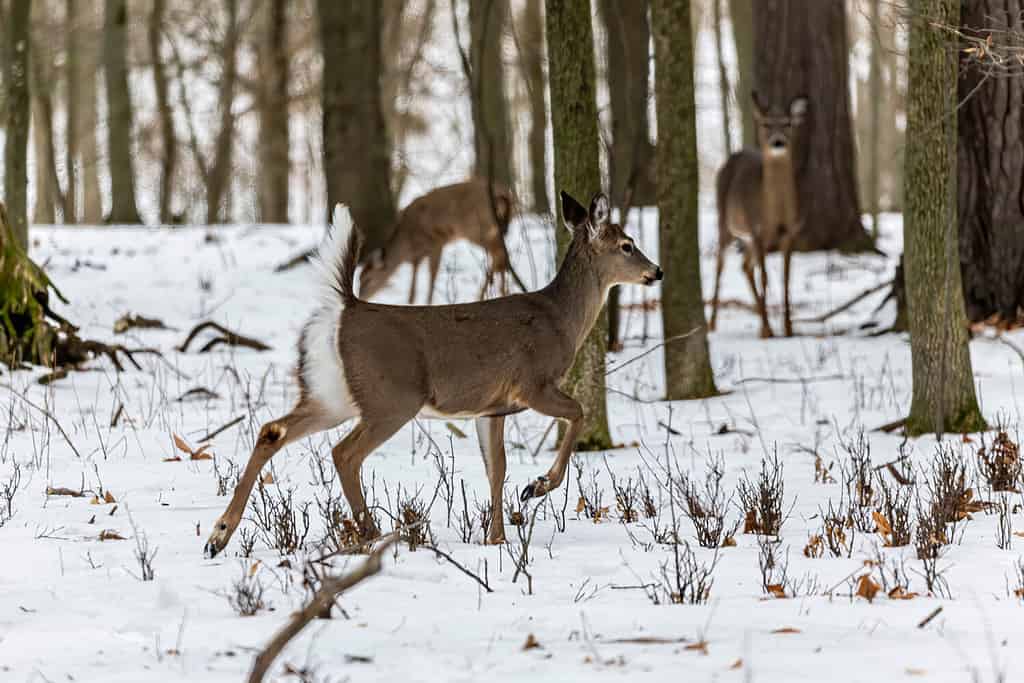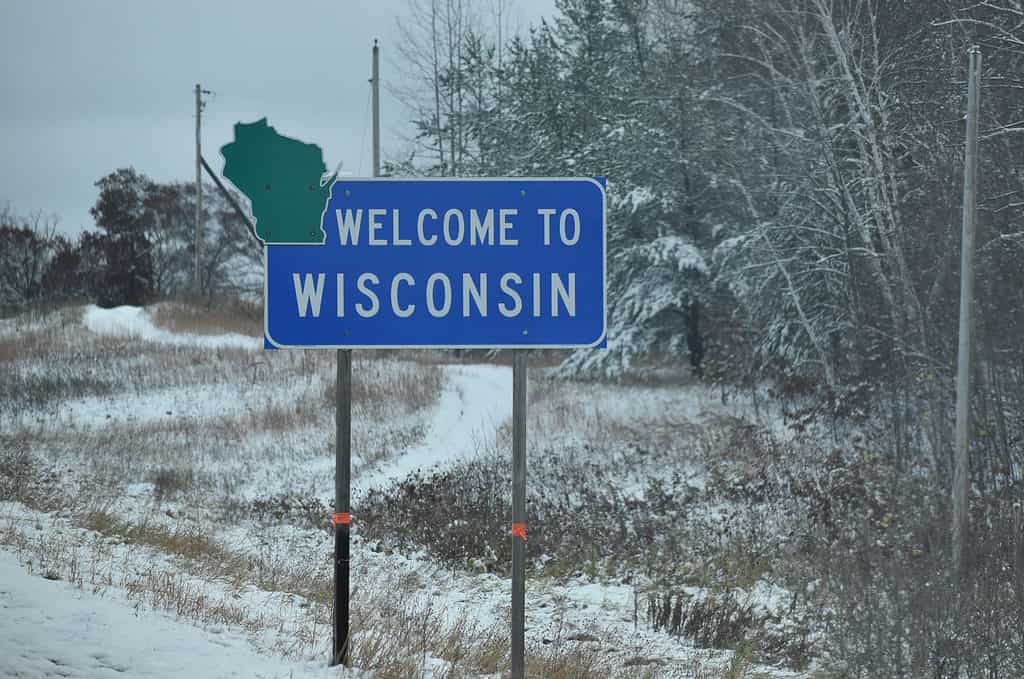Wisconsinites, perhaps more than most Americans, are used to extreme weather and don’t usually bat an eye. But sometimes there are powerful snowstorms. Sometimes those snowstorms can cause catastrophic damage that will take weeks or months to recover.
Let’s take a look at the biggest November snowstorm to ever hit Wisconsin. We’ll take you through the details of the blizzard, the impacts of the blizzard, the aftermath of the recovery, and other fun facts.
November Weather in Wisconsin
November snowstorms are rare. It’s still autumn, which means that the state is just recovering from the sweltering heat of the summer. For a snowstorm to arrive in October or November is just rare. As climate change continues to ravage the world, snow will start to fall in months that are totally out of the usual timeframe.
When it comes to average temperatures for November, the average high is 41.2 degrees Fahrenheit and the average low is 23.7 degrees Fahrenheit.
Armistice Day Blizzard

The heaviest snowfall to ever fall in Wisconsin was about 26 inches of snow in Neillsville, WI on December 26/27, 1904.
©Michael Tatman/ via Getty Images
The biggest November snowstorm to ever hit Wisconsin happened on Armistice Day 1940. Millions of Americans woke up on the morning of November 11, 1940, experiencing an unusually warm day. It was 65 degrees Fahrenheit throughout most of the morning, but as the day went on, the weather started getting bad. By the evening, heavy rain and snow were reported. Winds got intense, rain was heavy, and sleet followed. Temperatures went down drastically and the whole Midwest region was wrapped under a blanket of snow. When the residents of the region woke up, they woke up to everything covered in snow.
It was a low-pressure system that gathered moisture from the Gulf of Mexico and a cold arctic air mass from the north that combined into a treacherous snowstorm. By the end of the two-day snowstorm, a record 27 inches had dropped in the Midwest region (specifically Colleville, MN), but about 19 inches dropped in Wisconsin.
It is recorded that the Armistice Day blizzard is one of the deadliest blizzards to ever hit the Midwest. The heaviest snow to hit Wisconsin was in the northern and western parts of the state.
Wisconsin’s Wildlife During the Storm

Hurley is considered the snowiest town in Wisconsin and it achieved that record when it got 277.7 inches of snow in the 1996-1997 snow season.
©iStock.com/Hongkun Wang
Wisconsin has an abundance of wildlife. Year-round, Wisconsin hosts 668 native animals and other species that have inhabited the area. The most common animals you see in Wisconsin are black bears and badgers. But you can also spot moose, white-tailed deer, porcupines, and flying squirrels. For reptiles, milk snakes can be spotted in warmer temperatures, as well as snapping turtles and American bullfrogs. When it comes to birds, Wisconsin has many that include eastern bluebirds, purple finches, robins, and downy woodpeckers.
During winter, many animals will hibernate including woodchucks, squirrels, and bats. However, you will be able to spot some beautiful creatures out and about. There are some animals like deer and squirrels that love the snow and will make the most of it during the winter. If you have good eyesight, you may be able to see cottontail rabbits, too. When it comes to birds that love winter, chickadees love to frolic in the snow, as well as cardinals that will add a splash of color.
Impacts of the Blizzard
Public transportation was discontinued for some time, people were not able to communicate, and there were many deaths. People who endured the snowstorm recount that the cold was intense and it was very difficult to even breathe.
Survivors have stated that the cold air had a profound effect on their lungs for a time after the blizzard. Other people recounted that wild animals left right before the snowstorm hit the area and in a few cases, duck hunters saw thousands of ducks in the air escaping from the region and away from the incoming blizzard.
Aftermath of the Blizzard

The coldest month in Wisconsin is January.
©Karel Bock/Shutterstock.com
In the year 1940, communication was limited, which meant that all weather forecasts were usually set up at a specific place that ran the forecasts for a whole region. In this case, Chicago was the epicenter for the region’s weather forecasts. After the snowstorm hit the Midwest, many people blamed how meteorologists in Chicago got it wrong because millions experienced severe weather, in other parts besides Chicago. The result was an effort to provide 24-hour coverage and more offices that would detail weather forecasts throughout the region. People blamed the US Weather Bureau as well because they did not provide accurate weather forecasts.
The Midwest region suffered greatly and there was over 2.2 million dollars in damage. There were a total of 154 deaths in the region, of which 13 were in Wisconsin. In Lake Michigan, 66 sailors trapped in freighters and boats died.
Other Major Blizzards in Wisconsin

Besides the snowy weather during winter, Wisconsin is also known for its cheese.
©Michele M Vogel/Shutterstock.com
Blizzards abound in Wisconsin. And there’s no shortage of them as they happen every year. But let’s briefly explore some other major blizzards that have happened over the years.
- Blizzard of 1947: this takes the record as the longest blizzard in state history. The region was pummeled with 27 inches of snow between January 28 to January 30.
- May 2023 Blizzard: Talk about weird! This blizzard happened in May, yes May. About a total of 10 to 13 inches of snow fell in the Upper Midwest region and some parts had even more.
- Big Snow of 81: This blizzard took place between March 2 and 4, 1881 and the city of Madison alone saw about 28.5 inches of snow.
- November 2015 Blizzard: This snowstorm took place on November 20 and 21, 2015 and it was a rare snowstorm that confounded meteorologists.
- 1991 Halloween Blizzard: It seems that snowstorms hit Wisconsin during the holidays. This blizzard hit Wisconsin with about 6 inches of snow in some parts of the state.
Conclusion
And there you have it, the biggest November snowstorm to ever hit Wisconsin was the Armistice Day Blizzard in 1940. It’s odd to get snowstorms in November, of course, it’s even more odd to get them in May (like the May 1990 or May 2023 blizzards) or in October (like the Halloween blizzard).
There were 13 casualties in Wisconsin in the Armistice Day blizzard and a total of 154 in the entire region. Many people had effects that lasted months after the blizzard because of the cold. All in all, the Armistice Day blizzard will go down in history as one of the most intense, too.
If you are yearning for a white Thanksgiving, look no further than the state of Wisconsin. It may be rare, but you may be lucky that snow will fall. As you see snowflakes fall onto the driveway, you’ll hear your Uncle Bob complain as he carves into the turkey and your Aunt Fran singing Christmas carols a little too early. What a fun night that will be!
The photo featured at the top of this post is © UWMadison/iStock via Getty Images
Thank you for reading! Have some feedback for us? Contact the AZ Animals editorial team.







